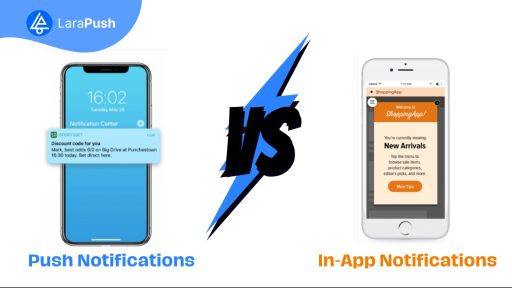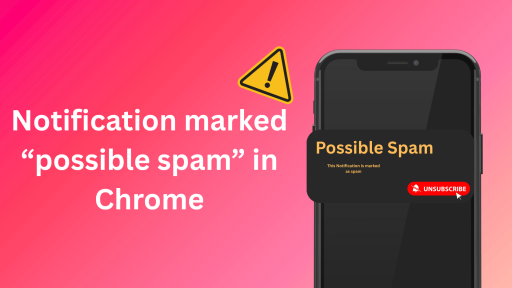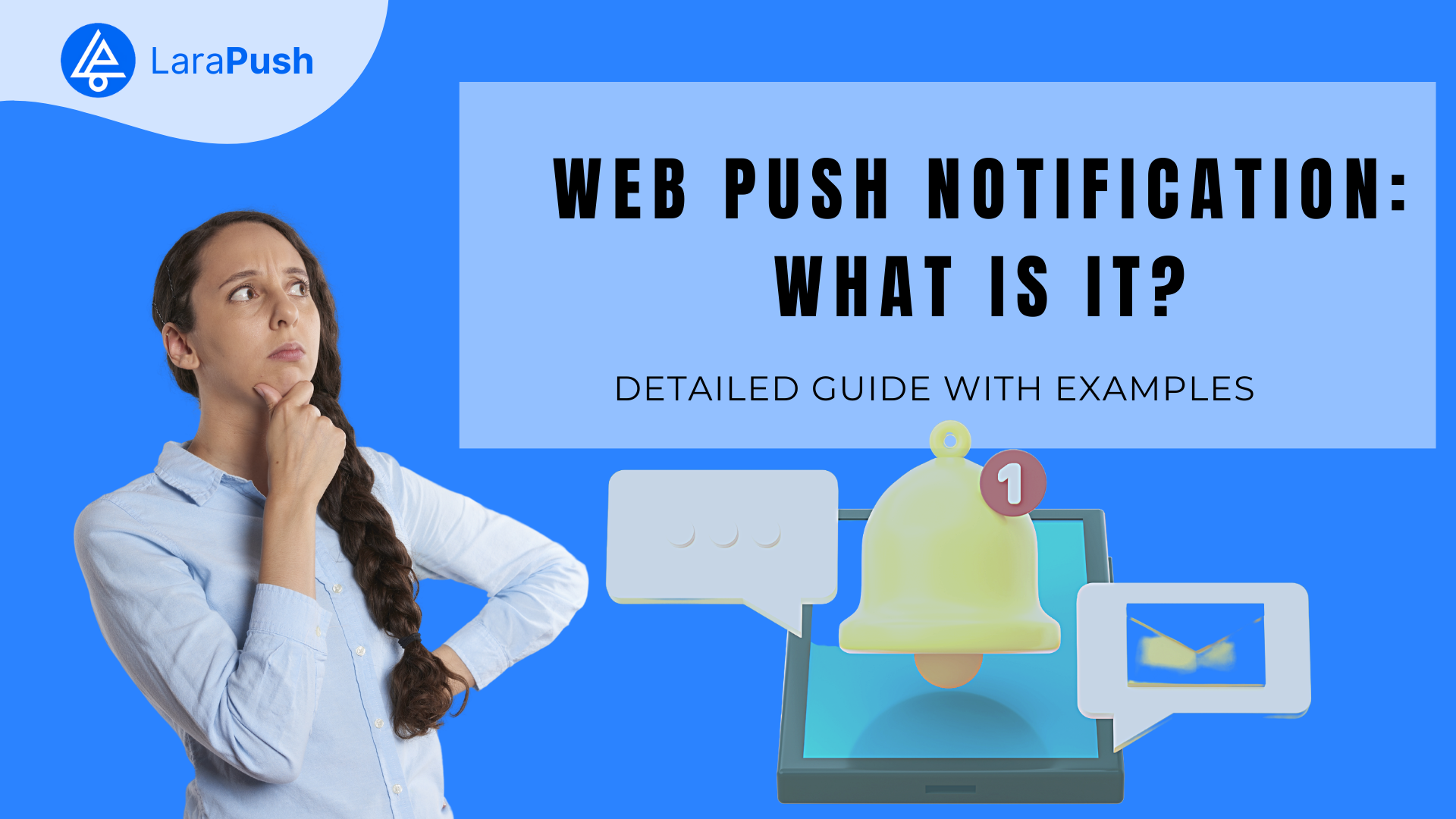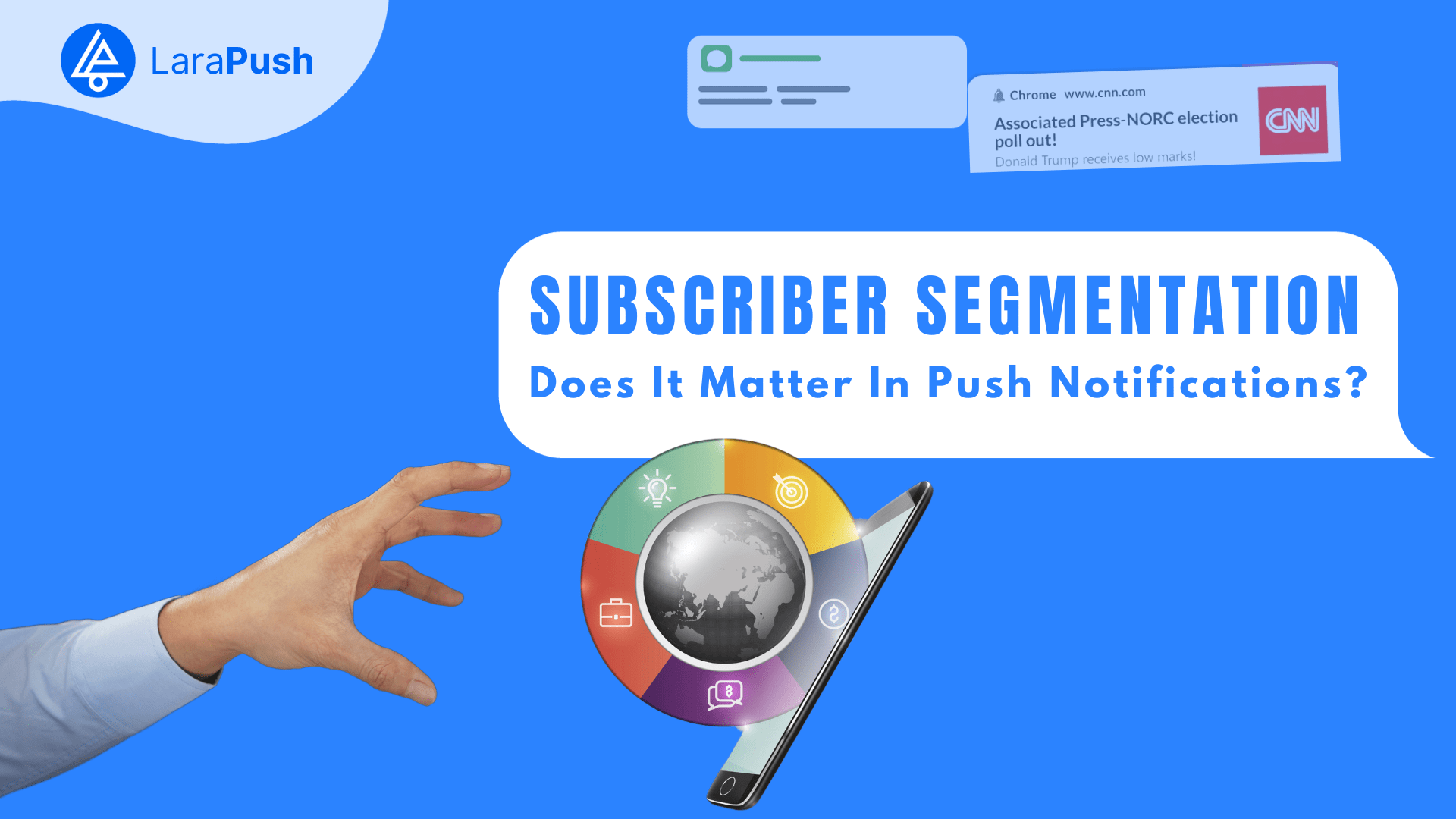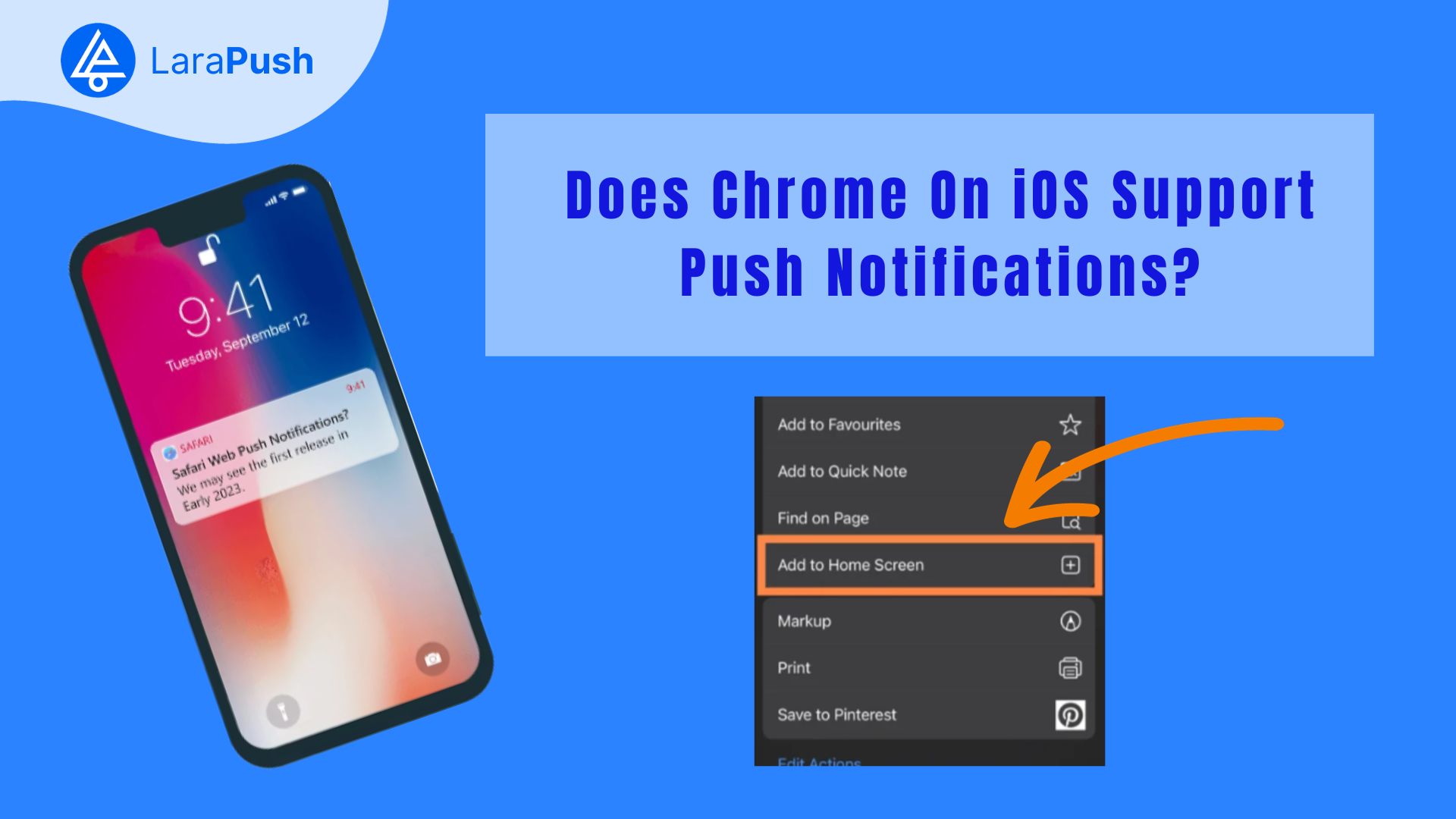Push notifications and in-app notifications are two of the most used mobile communication techniques that appear quite the same.
But is there a difference? Yes, there are, and to explain it in detail, we have come up with a detailed comparison between push notifications Vs in-app notifications.
What Are Push Notifications?
Push notifications are messages sent from a server to users’ smartphones or other devices. These messages appear on the device’s home screen or notification center, even when the app is not actively in use.
These notifications serve as a direct communication channel between the app and its users, providing a way to engage, inform, or alert users about relevant information.
Pros of Push Notifications
- Quick and simple to set up with readily available tools and plugins like LaraPush, especially for platforms like WordPress.
- Easy to add subscribers without asking for too much user input, making it convenient for mobile users.
- Cheaper alternative to traditional channels such as Email or SMS.
- Handy for sending alert messages, discounts, and real-time data, particularly useful for mobile apps.
- High interaction rates, with 40% of users engaging with push notifications within an hour.
Cons of Push Notifications
- Difficult to send personalised notifications compared to email marketing tools.
- Users must opt-in, and nearly one-third of users disable push notifications.
- Users can easily opt out or ignore notifications, and preferences for other communication channels like email or ads may prevail.
- Notifications have a limited word count, which can be a challenge for conveying detailed information.
What Are In-App Notifications?
In-app notifications, on the other hand, are messages that appear within the interface of a mobile app while the user is actively using it. These notifications are closely tied to the user’s in-app interactions and are designed to enhance the user experience, provide information, or guide users through specific features or updates.
Pros of In-app notification
- Messages can be triggered based on specific user actions or events, providing highly relevant and timely information.
- Messages appear within the app’s interface, maintaining the app’s look and feel for a seamless and immersive user experience.
- Easy testing and optimization, with the ability to modify and update messages within the app without changes to the underlying infrastructure.
Cons of In-app notification
- Too many in-app notifications can overwhelm users, leading to dismissal or ignorance of messages due to information overload.
- May feel invasive, especially if they arrive unexpectedly or contain highly personal information, potentially making users uneasy about privacy.
- Effective only when users are actively using the app, and if notifications are disabled, users may miss important updates, limiting their effectiveness.
- Poorly designed in-app notifications can disrupt user activities, causing confusion and frustration, negatively impacting the overall app enjoyment.
Push Notifications Vs In-App Notifications: Key Differences

| Parameter | In-App Messaging | Push Notification |
| Display Location | Inside the app | Outside the app |
| Delivery Mechanism | Integrated within the app, delivered internally when the app launches | Runs on OSPNS, delivered even when the app is closed |
| Objective | Interaction with active app users, deeper engagement | Re-engage users, improve app retention |
| Target Audience | Active users who frequently engage with the app | Disengaged or inactive users, encouraging app usage |
| Performance Metrics (KPIs) | Open Rate: 20%, Click-Through Rate: 28% | Open Rate: 75%, Click-Through Rate: 7.4% |
| User Control | Part of the app UI, cannot be disabled separately | Users can disable push notifications through app or device settings |
| Use Cases | Onboarding, Special Offers, New Features, Transactional Messages, Announcements | Event-triggered notifications, Transactional notifications, Promotional marketing, Geo-location messaging, App reminders |
| Key Considerations | Best for active user engagement, personalization, and longer messages | Effective for re-engagement, driving immediate action, requires careful content and timing |
When to use Push Notifications?
Abandoned Cart
Think of it this way- A user wants to buy something, search for it on your app, put it in the cart, but for some reason they get distracted. It might be because something important came up, some other notification popped up.
To get users to purchase their cart items, you have got to gently remind them. Push notifications act as a subtle yet effective nudge, rekindling the shopping journey.
Re-Engaging Inactive Users
Amid the myriad of apps installed on users’ phones, your app might face the risk of being overlooked.
In such cases push notifications become the friendly tap on the shoulder. They remind users of your app’s existence, reigniting their interest and encouraging them to rediscover the features they might have forgotten.
Sales And Offers
For businesses running special sales or promotions, push notifications are like personalised invitations. They directly ask users to show up and take the maximum benefit from these offers. It ensures your users don’t miss out on the excitement of exclusive deals.
New Content Updates
In the dynamic landscape of content-driven apps, push notifications function as timely reminders. Users, whether active or occasional, are notified of fresh content, blog posts, or updates. This strategic use ensures that users stay connected with the latest offerings, fostering continued engagement with your app.
Alerts and Reminders
Imagine having a personal assistant sending timely alerts and reminders. Push notifications emulate this role seamlessly, providing users with essential information such as flight tracks, calendar events, or other critical updates.
They act as a friendly nudge, helping users stay organized and informed about important aspects of their lives.
When Should You Use In-App Messaging?
Let’s break down the various use cases of in-app messaging in a casual and straightforward way:
Onboarding
For your audience using your app for the first time, it can be difficult to figure out things on their own. It’s better if they have a little assistance every now and then.
In-app messages are your user’s friendly tour guide, showing you around, pointing out features, and helping you make the most of the app.
Offers and Promotions
Ever get those pop-ups when you shop online telling you about amazing deals? In-app messages do the same inside your favourite apps.
They let your users know about sales, giveaways, and even throw in some coupons or discounts.
It makes your users feel they have a VIP pass to app-exclusive goodies increasing the user experience of app.
Keep users in the Loop
Got some important news about the app or the company? In-app messages make sure your users don’t miss out.
Whether it’s a major update, a policy change, or exciting company info, these messages keep them in the loop.
Process Completions
Once your users complete a task, let’s say a payment on your app, they would like to know the status.
You can use in-app messages to quickly update your users with the status like “order successfully placed” or payment failed etc.
App Wisdom Nuggets
Reading long manuals and guides is not everyone’s cup of tea. In-app messages deliver bite-sized tips and quick instructions.
They help your users navigate the app like a pro without having to read a long content.
Asking for Feedback
Ever seen this message when you use an app?
“Hey, we value your thoughts. What did you think of that cool new thing?”
This is how businesses ask for feedback from their users. You can use the same to get quick feedback from your active users.

Use in-app messaging to politely ask for feedback after the user has used your application for at least 2-3 hours.
So, in a nutshell, in-app messaging is like having a friendly companion in your app, guiding you, updating you, and making sure your experience is top-notch!
Wrapping It Up
Get this, in mobile communication, it’s not about picking sides.
Instead of using one channel and ignoring the other one completely, you should focus on drafting a strategy that has a balance of both.
In some use cases, push notification undoubtedly is the best choice whereas in others in app notifications take the centre. Hence, analyse the use case and then decide which is the best way to engage your audience.
